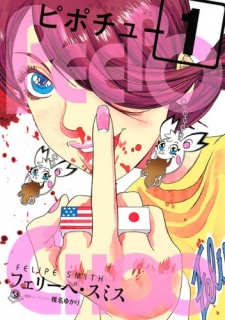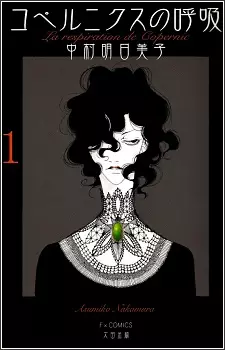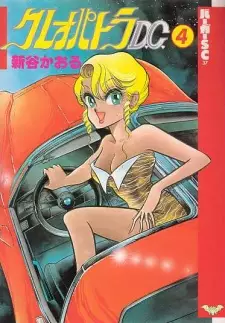Dec 9, 2013
It is rare wading through the endless streams of manga that stubbornly wring out every last drop of enjoyment from long deceased premises that you find such an angry, depraved and funny story in Peepo Choo that still has something meaningful to say at the end of the day. It would be irresponsible of me to say that Peepo Choo’s uniqueness can be wholly attributed to the fact that the mangaka Felipe Smith is a native of Argentina rather than of Japan, but his journey to living the dream that many artists who double as manga geeks have – being able to draw manga in
...
Japan – is reflected in and enriches his work. In many ways, the titles that he has created – Peepo Choo and an earlier OEL manga of his MBQ – feel like a creative retelling of Smith’s life with the emphasis on creative. The latter tells the story of a man living in Los Angeles trying to make a living by drawing comics.
Peepo Choo meanwhile begins by introducing us to Milton, a teenage otaku who is in despair over the disparity between his life in Chicago and his idealized imaginings of Japan. By night he fantasizes about living in Japan and by day he ditches school and his street clothes to cosplay as the titular character from the titular anime Peepo Choo and hang out at a local comic book shop. One day the shop hosts a contest that awards the winner an all-expenses paid vacation to Japan that Milton conveniently wins. Along with the shop assistant Jody, an inherently dislikeable teenager who desperately wants to lose his virginity to the rumored legions of Japanese women who put out easily for foreigners, and the shop owner Gill, a gigantic retired mercenary and current cross-dresser assassin who is using the contest as a front for his latest job in Japan, Milton finally gets the opportunity to have his childhood dreams shat on by reality.
The plot is executed in a similar fashion to series like Baccano and Durarara where the stories of multiple characters diverge and converge to create a wonderful mess. But unlike the aforementioned two series, there is no big reveal; everything is laid out in plain sight and the only mystery is how much more convoluted a simple vacation to Japan can get. A brief summary of even the first volume would be impossible but I’ll list a few points that may be of interest. Milton predictably realizes the gibberish he’s learned through Peepo Choo is not Japanese, everyone in Japan is not an anime geek and proceeds to go through various levels of angst and depression. Jody befriends the local yakuza boss, who is a sadistic version of Milton in regards to American gangster culture, by impressing him with his street clothes and his knowledge of gang signs. Gill goes on a series of double paged spread killing sprees – the only possible way to fit both his gargantuan build and the amount of severed arms, legs and heads that follow him whenever he puts on his BDSM assassin gear.
However, Peepo Choo isn’t a sleazy attempt at securing a large male demographic despite the gratuitous amount of sex, violence and gore. The deeply ironic message, sometimes appearing as if it was coming straight out of Smith’s mouth, is one of disgust at the racist, sexist and elitist cross-cultural perceptions between Japan and America but one that could be generalized to any other two nations. Take for example Jody who, during the short segment in Chicago, is the voice of reason, being the equally hostile arbitrator between the comic book geeks and the manga and anime geeks. He verbally abuses both sides into submission, pointing out the absurdity in thinking that you can extrapolate from a person’s medium of choice that he is superior or inferior in some way. However, these character dialogues sometimes become long winded author filibusters that are a bit tiring if you’ve been aware for a long time about things like many mangas are about ordinary everyday life or that there actually very few anime geeks in Japan (though the presence of these elements implies that Smith thinks a majority of fandom aren’t). Also, it may even be jarring to some people to have to read a lecture after they’ve just seen a hundred yakuza members brutally mutilated and killed.
Felippe Smith does not understand the meaning of restraint. He spares no effort to exaggerate and accentuate, seemingly making even the most ordinary of scenes seem to burst out of their paneled constraints. Disposable bad guys are human shaped blood bags, sexiness is expressed with literal hour glass figures and faces change without warning into a shrivelling pore of mucus and tears. All these aspects add to the absurdity that Smith is trying so hard to get across. But he does not only know how to draw; he also knows manga. There is a constant awareness of how panel placement and panel interactions with the story can amplify moods or conceal to create surprise. Thankfully his hostility towards us is rivaled by his intense passion for the medium.
Reviewer’s Rating: 10
What did you think of this review?
Nice
 24
24
Love it
 1
1
Funny
 1
1
Confusing
 0
0
Well-written
 0
0
Creative
 0
0Show all



























